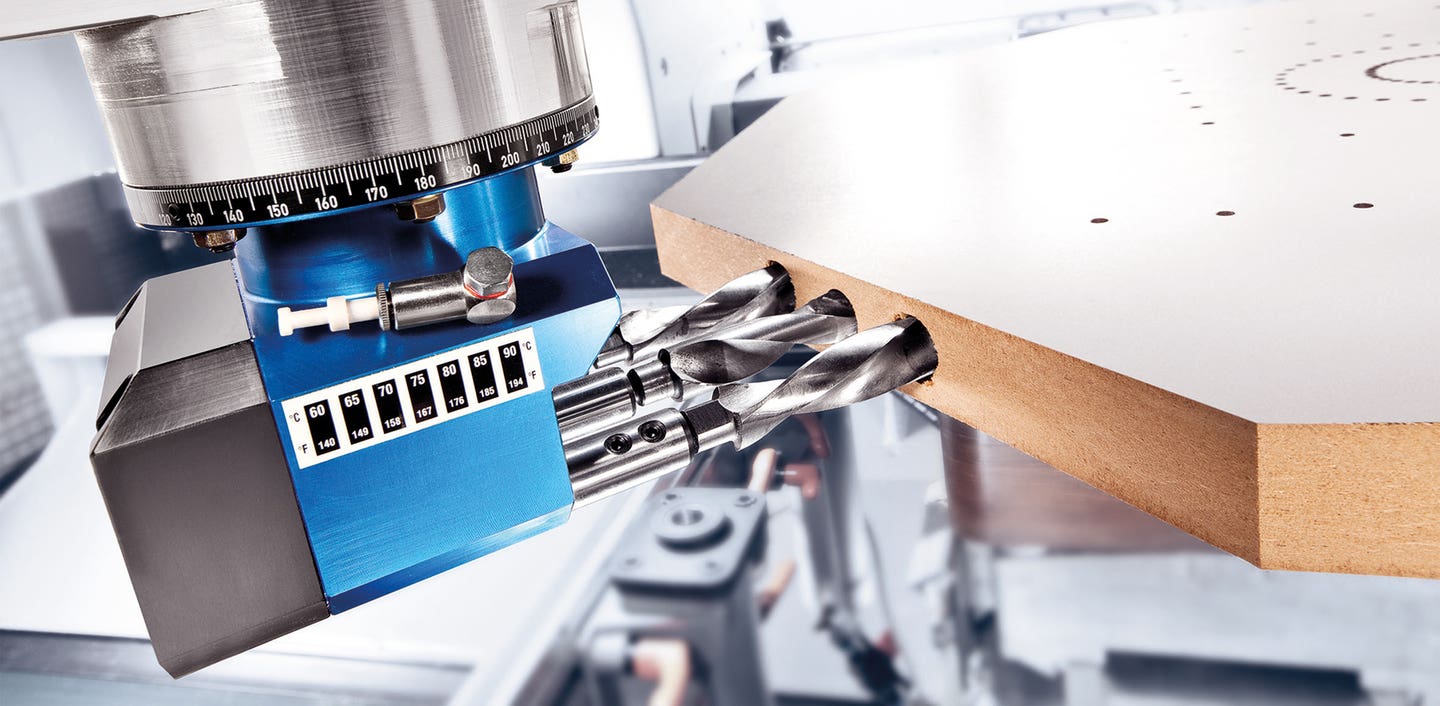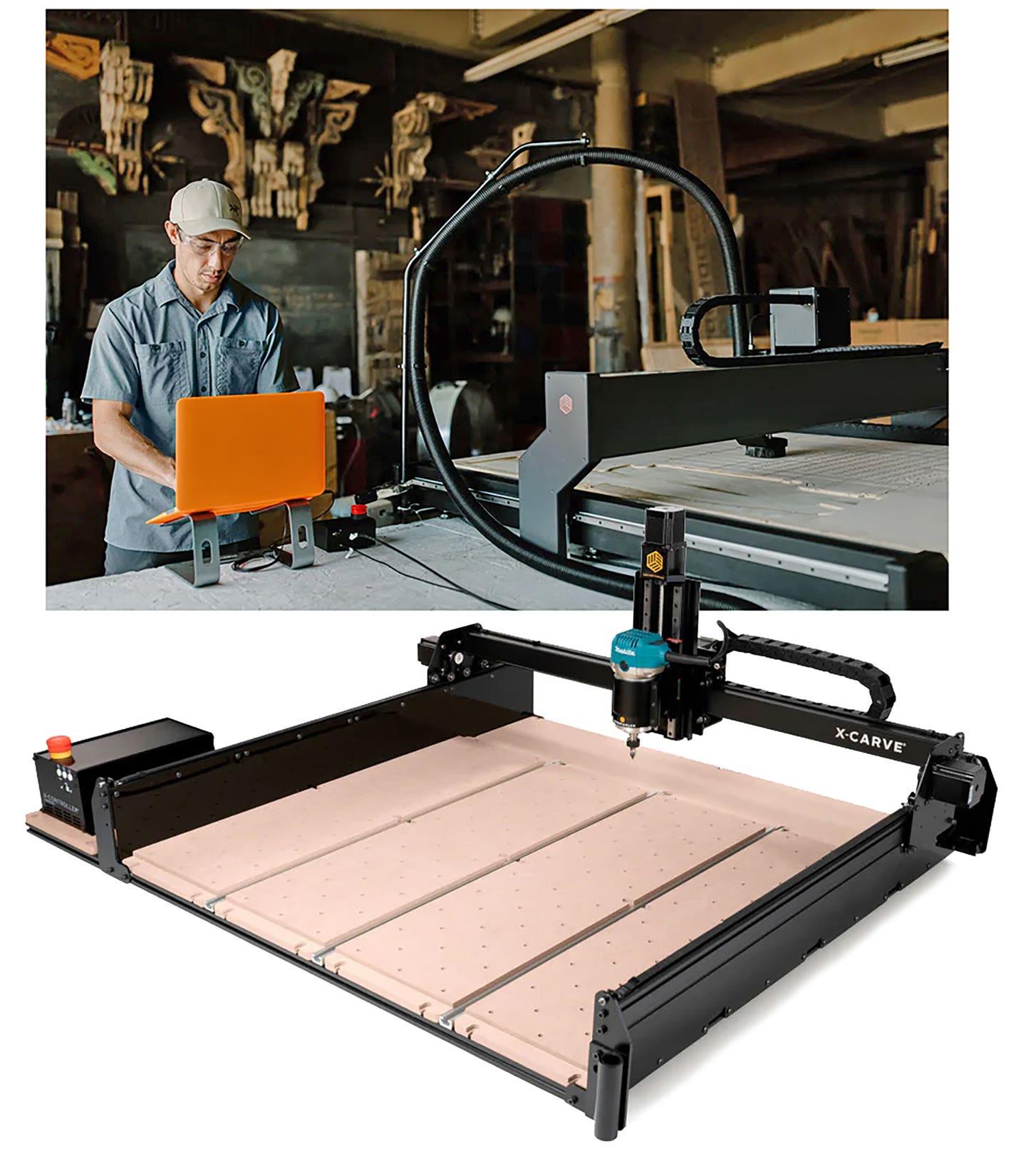The virtues of vertical saws
Any shop that regularly fabricates with panel products knows all too well the importance of square and accurate panel cutting. Nothing is more frustrating than out-of-square cuts that come back…
Any shop that regularly fabricates with panel products knows all too well the importance of square and accurate panel cutting. Nothing is more frustrating than out-of-square cuts that come back to bite you later in the fabrication process.
A good panel saw could be compared to what the Marines do during a wartime skirmish — lead the assault because they have the ability to get the job done. When starting anything new, whether it be a cabinet job or a military exercise, you want to make sure you set the precedent with an accurate, well laid-out plan that can be built upon. Procuring a good vertical panel saw could very well be the instrument to carry out such a plan.
My first experience with vertical panel saws was at a cabinet shop where I worked several years ago. It was a small company specializing in custom residential cabinetry. When I started with the company, all panels were cut on a table saw. I remember being somewhat intimidated by the arrival of the vertical saw. It wasn't because I felt it was unnecessary, but because it was such a different way of cutting material. It just seemed awkward having panels on edge during the cutting process. I soon realized it was a great complement to the operation and worked much like the vertical router we had already been using in the shop.
Although I didn't work too long in that shop after they purchased the new saw, I left with an unexpected appreciation for vertical saws. First and foremost was the ease in dealing with the panels. A standard sheet of 3/4" particleboard (or melamine) weighs about 96 lbs. Couple that with an awkward size, and you've got an element that over time will cause a lot of grief and frustration on your back. Manhandling these unwieldy sheets of material is like a football player dealing with an aggressive, oversized opponent on the line of scrimmage; they eventually wear you down. The nature of having to control the size and weight of the panel while attempting to get accurate cuts is inherently difficult.
Examining the benefits
I can still remember my first experience of cutting a sheet on the vertical saw. Getting the panel onto the saw was simple, because it didn't require lifting the entire weight of the sheet. Once it was positioned in place, I was moving the saw head, not the panel. There is a definite difference in moving a saw head on rails designed for movement rather than a heavy sheet of wood. It seemed effortless. I also noticed how much less fatigued I was after cutting several sheets. And these were just the benefits I noticed for my body (very important ones, I might add).
The second thing I noticed was the quality of the cut and speed of process. Panels were perfectly square, had clean-cut edges and production was noticeably increased. Hmmm. Why did we wait so long? It was embarrassing when I considered my previous narrow-minded thinking on the subject of how panels are best cut.
The third benefit I discovered about the vertical panel saw is the relatively small footprint. When the owner of that cabinet shop talked about bringing in a new saw, I wondered what tool he was going to get rid of. The space we worked in was already tight. The shop was well laid out with equipment and raw materials strategically placed. When the dozen or so workers were cranking it out at full steam, there was no room for anything else. It was amazing how so much stuff could fit in a space and yet still be productive. Surprisingly, with the arrival of the new saw, nothing went out the door. It was logically placed by the panel storage, nuzzled up near the saw it replaced. I thought, "What is he thinking? There isn't enough room to maneuver the panels." What I didn't realize is that not only the bulk of the saw's square footage is vertical, but the square footage of the panels we would be cutting was also vertical. What a concept.
Vertically challenged
If they're so great, why is it all shops don't have a vertical saw? Probably because there are some downsides. Although they have the ability to cut cleanly, not all utilize a scoring blade. Scoring blade technology increases the success of consistently cutting cleanly on both sides of a panel. Next, they are primarily designed to cut square, 90-degree incisions on the panel only. You're just simply out of luck if you need to cut long miters. Unlike the horizontal panel saw, vertical saws are mostly efficient on only panel products.
For instance, the design is not conducive to ripping solid wood; something where the horizontal configuration shines. In addition, most woodworkers are trained with an understanding of table saws, the mainstay of woodworking versatility. Vertical saws require re-training in your approach to cutting. And they're not the greatest when working with small parts.
Custom shops look for versatility in a tool, especially in large-dollar expenditures. Shop owners I've talked to who shied away from vertical saws all cited the same reason: versatility. I believe vertical saw manufacturers have responded. New developments in the vertical saw may change the way you look at their versatility. Small shops looking for a tool to bridge the gap in production work should find something new to be excited about. Large shops looking for production machines will even be impressed with the latest technological advancements.
Here's what the manufacturers are offering (in no particular order):
Hendrick
Hendrick Manufacturing Corp. offers a very advanced saw in the Pro-V model. The Pro-V is similar to a horizontal beam saw stood vertically to save floor space. The automatic cutting relieves the operator from moving the saw carriage, a real plus in production environments. A full-length pneumatic pressure beam eliminates the need for operator-inserted kerf wedges to prevent blade binding.
Other important features include a compact design; single blade scoring feature; three cutting modes; solid table surface allowing small part cutting; adjustable measuring tape and five adjustable flip stops.
Holz-Her
The Holz-Her name precedes itself in a variety of woodworking equipment. Vertical panel saws are no exception. Features found on the company's various models include its patented Super-Cut scoring system, 3" depth of cut, V-grooving, CNC capability and angle cutting up to 49 degrees with an optional angle cut fixture.
Holz-Her's newest model is the VPS 1260, an automatic version of the company's popular VPS 1255. The 1260 entry-level model can be used to cut a variety of materials (such as wood panels, solid surface, plastic and aluminum) easily and precisely. Features include automatic saw operation, all-welded frame, 169" x 75" cutting capacity, 2-1/2" depth of cut, precision guide-ways, full-length grooved work piece support and automatic shifting back grid.
Elcon
The DS series is the latest development in vertical saws from Elcon. They are compact machines developed to provide a quality and affordable machine to the entry-level user. Two sizes are available and come standard with transport rollers, double-cut scoring, movable frame, roller bearing guides and a welded box frame.
Elcon also produces the DSX series, which allows for fast changes from vertical to horizontal cutting operations, pneumatic plunging for easy movement, an automatic shifting grid and a completely shielded saw blade. A variety of sizes and custom-made lengths are available.
The DSXE is Elcon's largest capacity panel saw, offering an 80mm cutting depth, pneumatic plunging and the option of a 7-1/2-hp motor.
Milwaukee
Milwaukee Tool Co. offers a panel saw for the portable user. Its 110-volt, 15-amp motor and 8-1/4" blade complement the small shop's arsenal of tools.
Like other small saws, the Milwaukee is accurate to within 1/32". Horizontal and vertical scales allow for quick setup. The 1-3/4" maximum depth of cut will handle most panel thicknesses. Material can be fed from either side and slides along a smooth acting roller mechanism. For cutting panels more than 6' long, the extension kit accessory is required. Other options include a hold-down bar kit, quick stop gauge and wheel kit.
Panel Pro
Those looking for a low-price alternative to vertical panel saws may want to consider the Panel Pro. In the words of the manufacturer, "Panel Pro is an economical panel saw that makes it easy to handle those big sheets of wood or plastic and cut them accurately. The patented design of this vertical panel saw can't be matched for the price and features."
The saw's blade is positioned behind the sliding carriage to avoid potential operator contact, and the vertical frame supports the panel while the cut is being made. The Panel Pro measures only 5' long and 3' deep. Its small footprint allows it to be easily pushed out of the way while not in use; an important consideration for those not needing a panel saw set up for production. Basic features include 4' vertical and 8' horizontal cutting capacity, 1/32" cutting accuracy, 14-amp Ryobi motor and laser line for vertical cuts.
Putsch-Meniconi
Putsch-Meniconi manufactures heavy-duty vertical panel saws. All are solidly built with a one-piece welded steel frame with square beam construction for strength and rigidity. Ten models are available with cutting capacities from 10' to 17' in length, two scoring options and many other features such as V grooving, electronic digital readout and micro-adjustable scoring system. Even the company's smaller saws are guaranteed to have a cutting accuracy of 0.1mm over one meter in length.
The company has introduced a smaller saw, the SVP 133/2500, which has a 5' x 8' cutting capacity designed for the smaller shop. This is a full-fledged professional saw built exactly like its popular SVP 133, yet with a smaller footprint. The company has also introduced the UNIVER SVP 145-45, the world's first vertical panel saw capable of cutting at a 45 degree bevel. Until now, bevel cuts have only been available on table saws, sliding table saws and a few automatic beam saws. The SVP 145-45 can also deliver compound miter cuts using the bevel cut system along with an optional miter fence.
Saw Systems
Saw Systems manufactures affordable solutions for the vertical saw user. Two height capacity options of 52" and 64" are available. Standard features on all models include 1-1/2" depth of cut, 1-3/4" chrome guide tubes with nylon roller bearings, 1-1/2" steel tube frame, rotating saw plate with Porter-Cable saw motor, dust collection and safety shield.
Other options allow the user to choose additional material support either for one side or two, universal router plate accessory, fence system with Quick Stop, and castors that will make this a truly portable saw.
Saw Trax
Saw Trax offers several models for the small shop on a budget. That being said, the user will not have to sacrifice quality of operation just to save money. The company's saws have standard features such as sealed ball bearings on the carriage which provide tighter tolerance and easier movement, a patented "Accu-Square" system, nickel chromed guide tubes, bevel cutting, folding stand, and a dust brush under carriage which helps contain dust.
The company offers "off-the-shelf" Porter-Cable, Bosch and Milwaukee saws for easy replacement and maintenance. The Porter-Cable and Bosch saws allow for a 1-3/4" depth of cut and the 10" Milwaukee saw cuts up to 2-1/2" deep. Even without a scoring attachment, the 10" saw has the ability to achieve near chip-free cuts with the addition of a quality melamine blade. You can also easily add a router to the carriage to convert the saw into a panel router. Other options include spring hold-down clamps for thin material, a mid-fence for cutting small parts and a spinning carriage insert for quick conversion to ripping.
Lobo
Lobo has come up with a unique feature on its vertical panel saw; the ability to use a saw or router. Standard equipment includes both a 2-1/4-hp saw and 2-1/4-hp router. Changing between the two takes less than a minute.
Other features include a floating saw/router head, 62" crosscut capacity, unlimited ripping length, patented roller material carriage that allows heavy material to roll easily, thin material pressure guard, an all steel frame and a heavy duty counter balance.
Striebig
Striebig has introduced a new and improved version of its Optisaw vertical panel saw. Features found on the new saw include a two-section mid-shelf with adjustable fingers for small parts, an automatic mechanically shifting support grid with replaceable plastic laths, a full-length measuring channel with English and metric scales, and a TRK dust collection system. The 7-1/2-hp motor is equipped with a motor brake, Y-Delta soft starter and noise-reducing insulation. The saw chassis is an all-welded steel frame, making the saw suitable as a freestanding unit or when mounted to the wall.
Striebig has also introduced the new Compact. It's the only saw of its kind to feature standard aluminum fingers that can be moved individually along the horizontal T-slotted center shelf bar. Work piece support is provided along the full length of the saw for greater comfort. A shifting grid that moves upward prevents jamming or damage caused by off-cuts leaning against the frame. There is also a 24" repetitive rip device with a roller follower, an improved digital measuring system providing increased accuracy, a measuring stop that flips out of the way, and it can handle sheets up to 5' x 10'. This precision Swiss-made saw will cut perfect repeatable edges. Options include a scoring saw unit, grooving accessories and an angle-cutting unit.
Safety Speed Cut
Safety Speed Cut has recently introduced two new models geared for the small shop, the C4 and C5. Both models pack features of the company's larger saws, just on a 5' frame. Standard equipment includes a 3-1/4"-hp saw motor, 1-3/4" guide tubes, 4 Nylatron roller bearing system, thin material pressure guard, spring-loaded counter balance system, plastic material rollers, and quick change from horizontal to vertical cutting.
Equipped with castors, these saws could easily be transported to a job site. Maximum rip capacity is 96" and maximum depth of cut is 1-3/4" with the 8" diameter blade.







